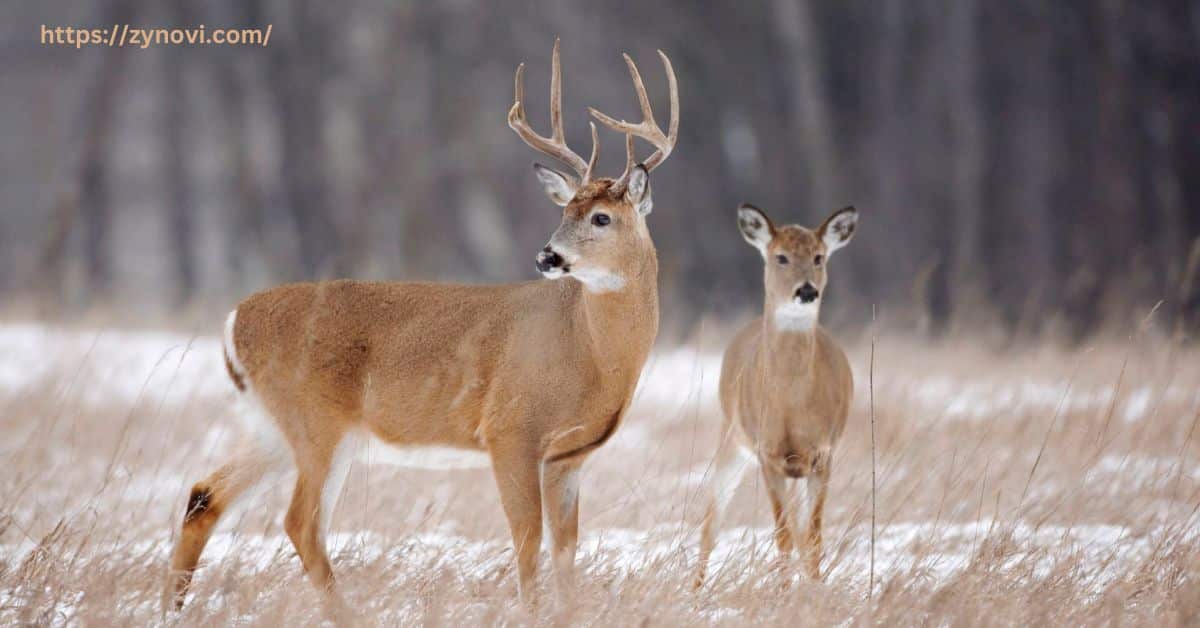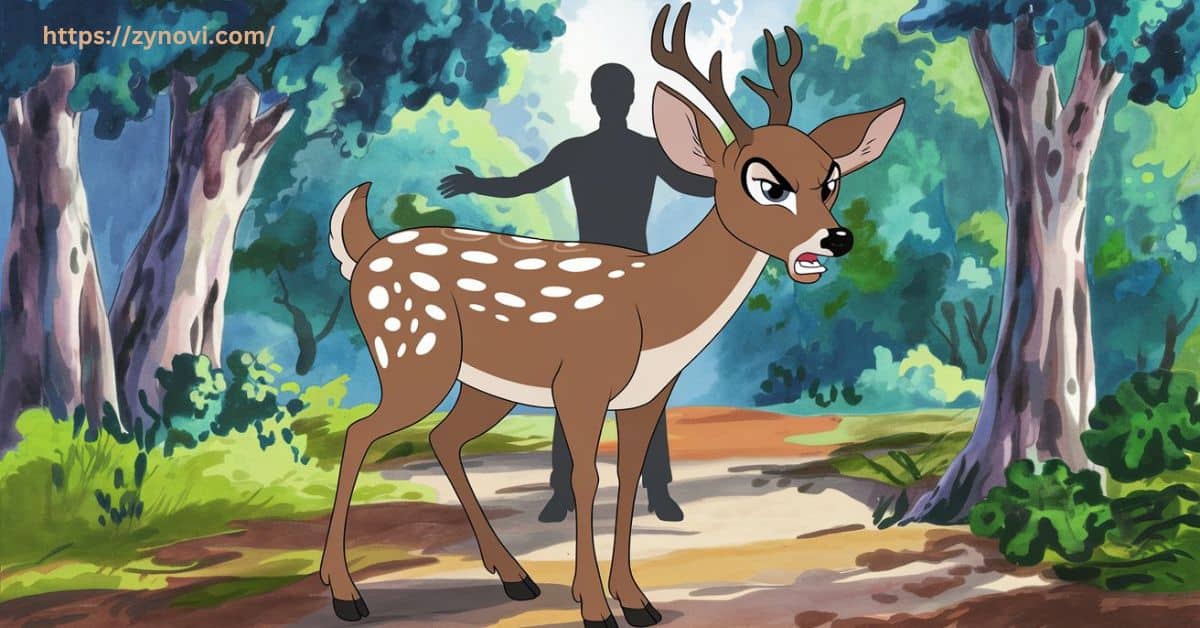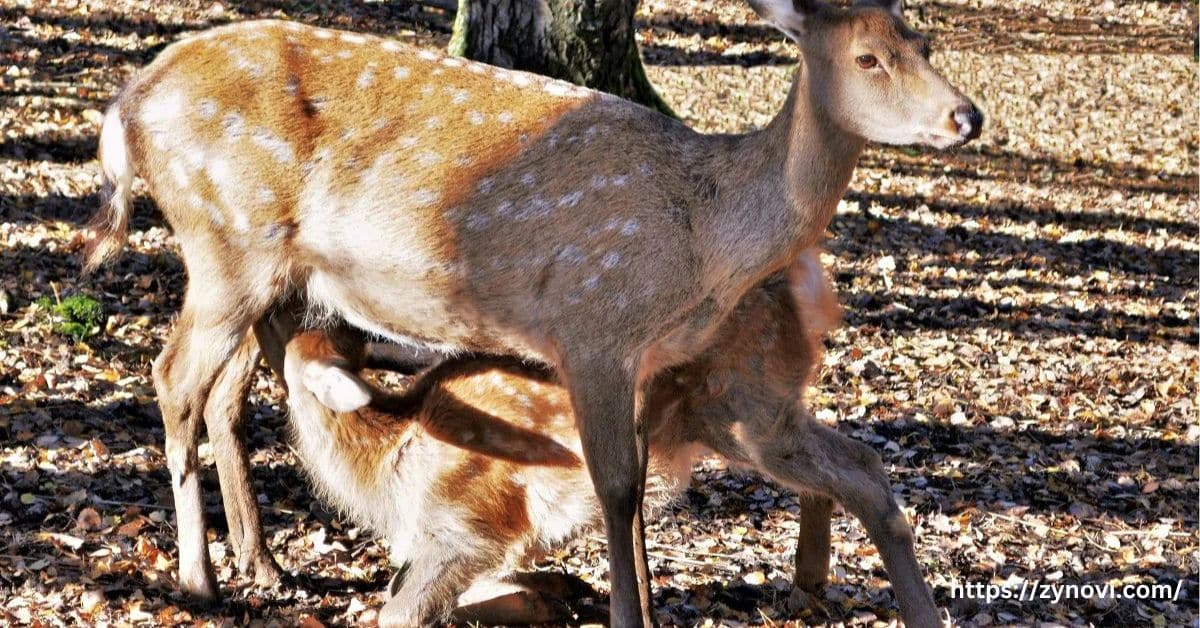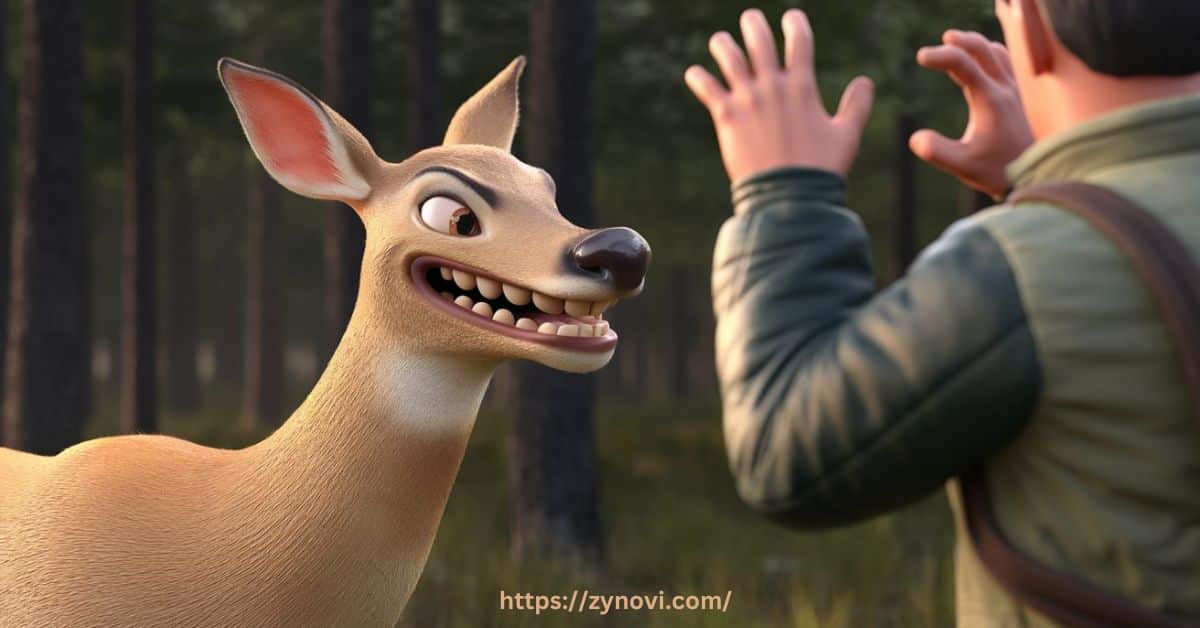Do Deer Attack Humans? Deer rarely attack humans, but they become aggressive under certain situations, like mating season or feel threatened.
It’s a question many of us have probably never considered, but it’s one worth exploring. While deer are often seen as peaceful, graceful creatures, there are certain situations where they can become unexpectedly aggressive.
Whether you live in a rural area surrounded by wildlife or simply enjoy hiking through the woods, understanding when and why deer might pose a risk is essential. In this article, we’ll look at why deer being aggression, how to recognize warning signs, and, most importantly, how to stay safe in their presence. Keep reading to learn more!
Who is the Deer?
Deer belong to the Cervidae family, which includes species like white-tailed deer, mule deer, elk, and moose. These herbivores are commonly found in forests, grasslands, and wetlands, and they have evolved to thrive in various habitats.
While they are typically peaceful and solitary, deer behavior can change significantly in certain situations.
Let’s explore their physical traits, social structure, and dietary habits to better understand their actions and aggression.
General Characteristics
Deer are known for their graceful movement and acute senses. Their primary defense mechanism is speed, which helps them escape predators.
Most deer species are crepuscular, meaning they are most active at dawn and dusk. Deer are also herbivores, feeding on a variety of plants, including leaves, twigs, fruits, nuts, and green vegetation.
However, their aggression can surface when they feel threatened or are protecting something important.
Physical Features
Deer possess several distinctive features that aid their survival:
| Feature | Description |
|---|---|
| Legs | Long, strong legs designed for running at high speeds to escape predators. |
| Senses | Acute vision, hearing, and smell, allowing deer to detect danger and remain aware of their surroundings. |
| Antlers | Present in male deer (bucks); used during the rutting season for fighting and territory disputes. |
| Defensive Behavior | Antlers serve as a defense mechanism, especially when deer feel threatened. |
Behavior and Habitat
Here’s the information in a list format:
- Deer Behavior: Generally peaceful, but territorial behavior can lead to aggression.
- Rutting Season: Male deer (bucks) are particularly aggressive during this time, defending their territory.
- Fawning Season: Female deer (does) become aggressive when protecting their young during fawning season.
- Human-Settled Areas: Deer are highly adaptable and often live near human settlements.
- Attraction to Suburban Areas: The availability of food in suburban areas draws deer closer to human populations, increasing the risk of encounters.
Social Structure

Deer herds typically follow a matriarchal social structure, where the oldest and most experienced female (doe) leads the group. This structure ensures that the herd is guided by the wisdom of its leader, especially when it comes to finding food and avoiding predators.
Males, particularly young bucks, usually form bachelor groups separate from the females and their offspring. This separation can lead to different behaviors, as isolated bucks, lacking the protection and social stability of the herd,
Those may become more aggressive when encountering humans or feeling threatened. Understanding these dynamics is crucial for predicting and managing human-deer interactions.
Diet and Foraging
Deer primarily consume leaves, twigs, fruits, nuts, and various green plants. They are selective foragers and may venture into human yards for food.
This dietary habit can lead to conflicts when they feed on gardens or crops, causing frustration for property owners.
In such cases, the deer may exhibit defensive behaviors, including stomping or charging.
When and Why Do Deer Attack Humans?
Understanding when and why deer attack humans is crucial for preventing dangerous encounters. While deer are not naturally aggressive towards humans, there are specific circumstances that can provoke them to defend themselves.
During Mating Season (The Rut)
- The rut season is a time of heightened aggression for male deer. During this period, bucks are particularly territorial and may challenge anything that they perceive as a threat to their dominance.
- This includes other males, as well as humans. Bucks use their antlers in these battles, and their aggression can be aimed at anything that enters their space, including unsuspecting humans.
- Mating aggression in deer is most common in the fall when bucks are actively seeking does. During this time, bucks may exhibit aggressive body language, such as stiff posture, flattened ears, and lowered heads.
- These warning signs indicate a defensive response, so it’s essential to avoid approaching deer during the rutting season.
Protecting Their Young (Fawning Season)
- Maternal deer aggression is most noticeable during the fawning season in spring. Does are extremely protective of their young and will not hesitate to defend them if they perceive a threat. If you come too close to a fawn, the mother may react aggressively, even if you are unaware of the fawn’s presence.
- Protective doe behavior includes stomping, kicking, and charging if they feel their fawn is in danger. This defensive instinct can be dangerous, especially if the doe feels cornered or threatened. It’s important to keep your distance from fawns, as they are often left alone by their mothers and may not appear to be in immediate danger.
When Cornered or Threatened
Even the most calm and peaceful deer can become aggressive if they feel trapped or cornered. When faced with a perceived threat and no escape route, deer may react with fear-driven aggression.
This can include stomping their hooves to warn of danger, charging at the threat, or even using their sharp antlers to gore. Understanding and recognizing these defensive behaviors is crucial to avoiding dangerous encounters, as cornered or threatened deer will do whatever it takes to defend themselves.
Aggressive Signs of Deer Behavior

Being able to recognize the warning signs of aggressive deer behavior can help you avoid conflict. When deer feel threatened, they will often exhibit certain physical and behavioral cues that indicate aggression.
- Rigid posture: The deer may stand still with its body stiff, preparing for either flight or fight.
- Flattened ears: This signals that the deer feels threatened and is ready to defend itself.
- Lowered head and antlers: This is a clear sign of aggression, especially from a buck during rutting season.
- Intense stare: A deer may focus its gaze on you as a warning before making any aggressive moves.
If you notice these signs, back away slowly and avoid sudden movements. Never attempt to get closer, as this could trigger an attack.
How to Safe From Deer Attacks
While deer attacks on humans are rare, there are several safety measures you can take to avoid deer attacks and reduce the risk of confrontation.
Safety Tips
- Avoid approaching deer: Always give deer space, especially during the rut and fawning seasons.
- Be aware of your surroundings: If you’re in an area known for deer activity, stay alert to potential encounters.
- Keep pets leashed: Deer may perceive pets as threats and respond aggressively if they feel cornered.
- Stay calm: If you encounter a deer, remain calm and avoid making sudden movements that could provoke aggression.
Precautions During High-Risk Seasons
During rut season and fawning season, deer are more likely to exhibit aggressive behaviors. To stay safe during these high-risk times:
- Avoid outdoor activities at dawn and dusk when deer are most active.
- Don’t approach or touch any fawns you may find alone, as this could provoke the mother’s protective instincts.
Home Safety Measures
To prevent deer from entering your property and potentially causing harm, consider implementing these measures:
- Install deer-proof fencing: A tall, sturdy fence can keep deer out of your yard.
- Use repellents: Deer repellents, such as those with garlic or hot pepper, can help deter deer from feeding on your plants.
- Motion-activated devices: These devices scare deer away with noise or light when triggered.
How to Respond to a Deer Attack

If you find yourself in a situation where a deer attacks, it’s crucial to stay calm and take immediate action.
Immediate Actions
- Stay calm: Don’t panic, and avoid making any sudden movements.
- Back away slowly: If possible, slowly back away from the deer and create distance between you and the animal.
- Make yourself appear larger: Raise your arms or use a jacket to make yourself look bigger to intimidate the deer.
| Action | Details |
|---|---|
| Self-Defense Strategies | If a deer charges, use nearby barriers or objects for protection. If knocked down, curl into a fetal position to shield your vital organs. Stay still until the danger passes to reduce the risk of further harm. |
| Seeking Medical Attention | Seek medical help immediately after an injury. Even minor wounds from antlers or hooves can lead to serious infections or complications. It’s important to get checked out, even if the injury seems small. |
| Long-Term Considerations | Monitor your injuries for signs of infection, such as redness or swelling. Additionally, be aware that encounters with aggressive wildlife can have psychological impacts, potentially causing lasting trauma or anxiety. |
FAQs
What to do when a deer attacks you?
If attacked, use barriers for protection, curl into a fetal position if knocked down, and stay still until the danger passes. Seek medical attention for injuries.
How to tell if a deer is going to attack?
Signs include aggressive body language like stomping, flattened ears, a lowered head, and intense staring. Avoid approaching if you observe these behaviors.
What happens if a human touches a deer?
Touching a deer can stress the animal, leading to defensive behaviors. It’s best to avoid physical contact to prevent harm to both parties.
Are deer afraid of humans?
Deer are typically cautious around humans but may not fear them entirely, especially if they have become habituated to human presence in suburban areas.
Conclusion: Do Deer Attack Humans?
Although deer attacks on humans are rare, they can occur under certain circumstances, particularly during mating season (rut) or when they are protecting their young. Understanding deer behavior, such as recognizing aggressive body language and avoiding close encounters during high-risk periods, is crucial to preventing dangerous situations.
By respecting deer and their natural instincts, we can coexist peacefully while minimizing the risk of conflict. Always stay vigilant, avoid approaching deer, and respect their space in natural habitats to ensure both your safety and the well-being of wildlife.










